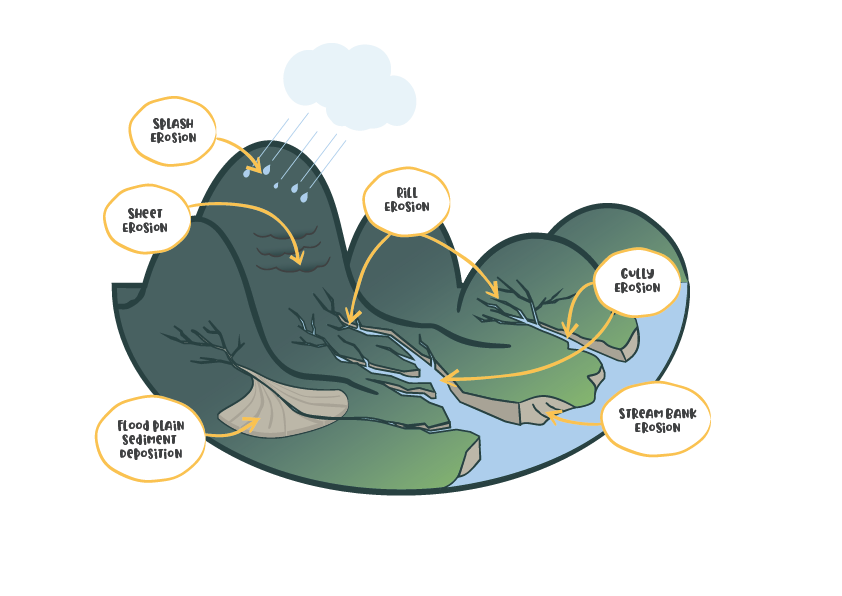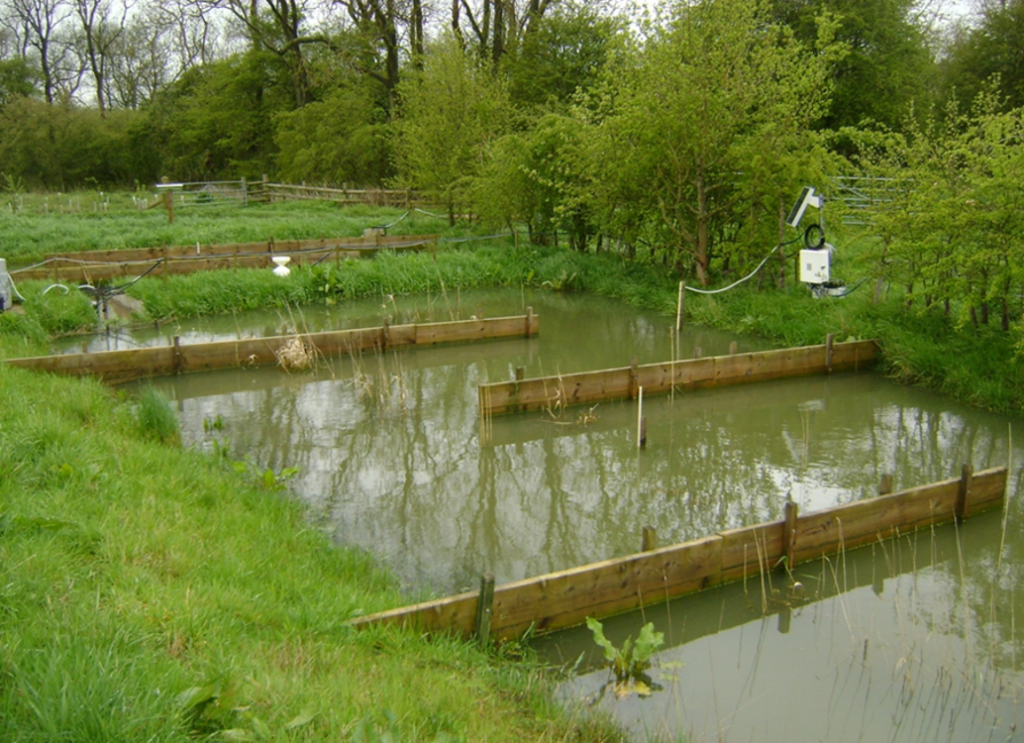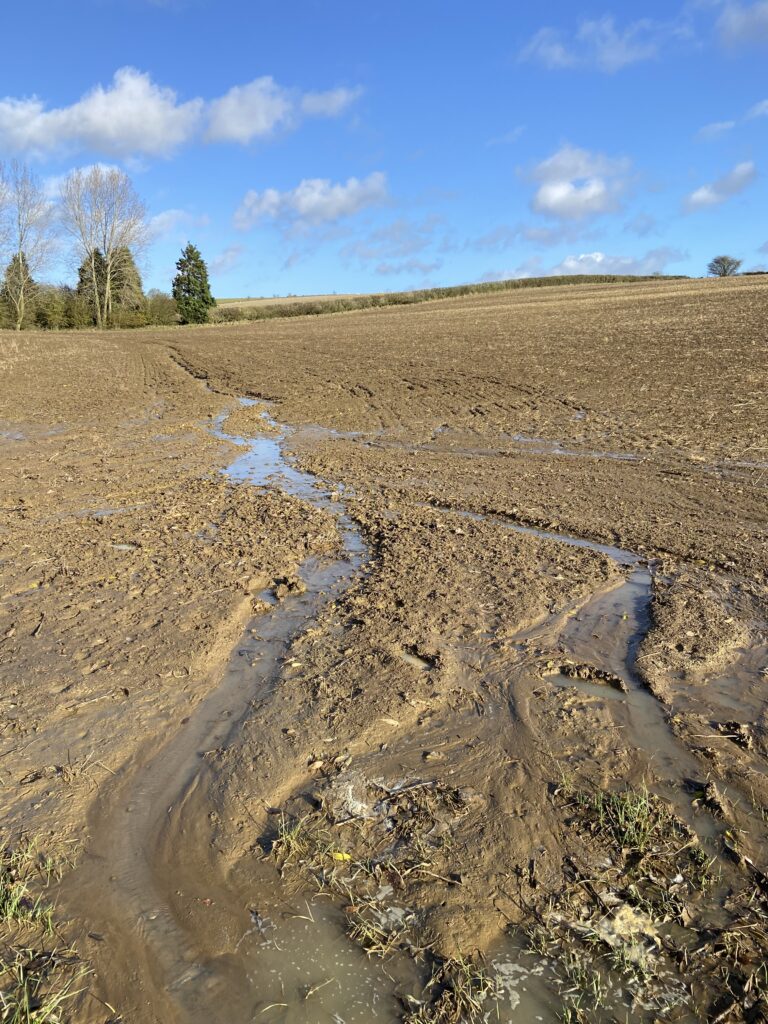Written by Joe Stanley, Head of Sustainable Farming, at The Allerton Project
I was recently invited to speak at the North of England Farming Conference at Hexham in Northumbria, with a wide brief to cover anything forward-thinking which ticked the box for both environmental and financial sustainability. Weeks in advance I had submitted my presentation which covered a wide spectrum from agroforestry to nutrient use efficiency; SFI to IPM. But on the drive north in the wake of storms Babet and Ciaran, I couldn’t help but notice the devastation wrought on arable crops by the torrential rains – devastation, it must be said, more than matched by the state of crops across North-West Europe when I was on the continent the next week.
Upon arriving at the venue, I decided it was more practically useful to junk my planned presentation and instead rapidly throw together some of the information gleaned from 30 years of research at the Allerton Project into soil management, and how growers might build resilience into their land in the face of escalating climate extremes. I hope perhaps that some of that information is useful here.
According to Environment Agency figures dating back to 2019 (before our winters became so consistently challenging) we are though to lose some 2.9m tonnes of topsoil from England and Wales every year at a direct cost to the economy of around £180m (a mere £62/t!), while over 2m hectares of soil are thought to be at risk of erosion. Globally, 24m tonnes of topsoil are thought to be lost to erosion annually, with an area the size of Greece suffering fresh soil degradation in the same time period. It has been calculated that soil regenerates at the rough rate of one inch per 250-800 years; no doubt most of us are aware that we can lose it much faster than that. Soil is a finite resource.

The factors which influence soil erosion are many and varied; weather, soil type and topography are largely out of our control. Yet there are things which we can influence; crop selection and rotations; cultivation type and direction; drainage; soil cover and soil health. I won’t teach the reader to suck eggs by extolling the virtues of field drainage, but needless to say it’s probably the single biggest limiting factor in the productivity of many soils as we enter our fourth decade since drainage grants were discontinued.
Rotations are becoming an increasingly important factor in the soil loss equation; having been collectively encouraged to push autumn drilling later into October and even November to deal with blackgrass, we’re now seeing all manner of problems arise from this approach. Here at the Allerton Project, we are looking at very significant crop loss from seed planted prior to Babet and Ciaran which simply rotted in the ground, while worked down ground all around us is currently flowing into the North Sea. Maize fields are a sea of ruts and mud. Rotational choice is basic, yes, but what has been acceptable and even successful in the past is decreasingly so.
Into this feeds more general arguments about land use; which areas of fields (and even farms) might be better planted with buffer strips, grass leys or trees? Modelling conducted by the Allerton Project shows that afforestation can reduce sediment (and phosphate) loss to water by an average of 75%, while utilising 20m buffer strips in an arable situation can reduce it by some 25%. However, by adopting no-till establishment, reductions of 35% can be seen on average, even in the absence of the other measures. In stacking these different approaches, very significant improvements to soil management can therefore be achieved.

Reduced tillage is key to stopping soil movement before it starts, with the field surface remaining un-disrupted and soil particles less prone to dislodgement by rainfall and erosion by surface run off. An added benefit is the higher proportion of crop residues to be found in such systems, which add ‘soil armour’. But tramline management is also a key element of good soil management; we’ve found that some 80% of sediment and phosphate loss can be attributed to the 2% of the field which consists of tramlines.
There are many practices which can be employed to reduce tramline erosion, the most effective of which is disruption with a following tine. However, we recognise that this is not practical in a broadacre arable situation, and our data would indicate that contouring (where possible) and use of low ground pressure tyres are the next best options.
If soil does start to move, gets past buffer strips and enters a field ditch, sediment traps are a last line of defence to stop it from leaving the farm, the intention being to intercept sediment-laden water and slow it down, decreasing the energy holding soil particles in suspension and allowing them to settle on the bottom. We have conducted extensive trials with these capital items, on a range of soil types: our own heavy clay; a medium loam; a sandy loam. Over the course of three years, we measured some 70t of sediment collected on the sandy soil site; some 40t on the medium loam and a mere 1.7t on our own clay site. This demonstrates two things; heavier soils are by their nature more difficult to erode in the first place, but that sediment traps are also very site-specific: although highly effective in situations with larger, coarser and heavier soil particles, they are of very low efficacy in situations with tiny clay particles where days are required to allow them to drop out of suspension, not hours. In clay landscapes, soil must be intercepted before it leaves the field.

Of course, perhaps the most effective – if most difficult to achieve – means to build resilience into soils is to increase levels of organic matter. As previously related in these pages, it has taken us a decade of ‘conservation tillage’ techniques to increase some of our clay soils by 0.7% SOM; it is not a quick process. But higher levels of SOM demonstrably improve the structure of soil, and thereby its ability to allow rainfall to infiltrate. Higher OM levels also give rise to improved levels of soil biota, including earthworms, which have been shown in some situations to contribute some 80% of the infiltration capacity of cropland soils, largely through the deep vertical channels of anecic worms, too easily disrupted by tillage. And with OM holding up to 10x its own weight in water, it’s thought that increasing it by 1% in a standard mineral soil can add an additional 200t of water holding capacity per hectare to a depth of six inches. When the flooding stops and the inevitable spring drought begins, that is a very valuable resource.

Every farm and field is different, with a wide interplay of different factors impacting on optimum soil management between them. But there are fundamental principles of good soil management which are broadly applicable in any situation. The challenge for individual farm businesses, now and in the coming years, is to harness available income streams to assess which land use and soil management techniques are best suited to their situations to safeguard the future of their most valuable asset.


